I bet you take extra care to avoid the worst GMO products or foods with harmful chemical additives when you’re shopping, right?
So how would you feel about buying meat from a laboratory instead of a farm?
If you think that option won’t occur in your lifetime, think again.
Lab-grown meat hit the science community with a big bang back in 2013, when Google co-founder Sergey Brin sponsored scientist Mark Post and his team to create cultured minced meat in his lab at Maastricht University in the Netherlands.
The first lab-created hamburger cost a whopping $330,000+ and took five years to develop.
That makes splurging for grass-fed beef seem reasonable!
All kidding aside, taste-testers of the lab burger said the meat was almost identical to regular ground beef you could purchase at your local grocery store or butcher.
So should we all get on board with this being our new future?
What kind of environmental and health impacts does lab-grown meat present for us anyway?
These questions prompted me to search for answers.
Wait, You Can Grow Meat?!

No, it’s not Frankenmeat: it’s science.
See, scientists harvested stem cells from a cow’s shoulder and placed them in petri dishes (you remember those from science class, right?) along with other bio-nutrients that allowed the cells to multiply.
The stem cells in this case are called “satellite cells” which are the same kind of cells responsible for repairing and regenerating your muscles after an injury.
This makes total logical sense: when we buy meat at the store, we’re really looking for choice cuts of muscle, not cells. So why not just simulate the creation of new muscle?
The stem cells grew strands of muscle that were .02 inches thin in just three months. Scientists used 20,000 of these strands of new cow muscle fiber to make the famous lab hamburger.
Now that we know it can be done, what are the implications for us and our environment in the future?
Will Lab Grown Meat Be Healthier?
No More Antibiotics
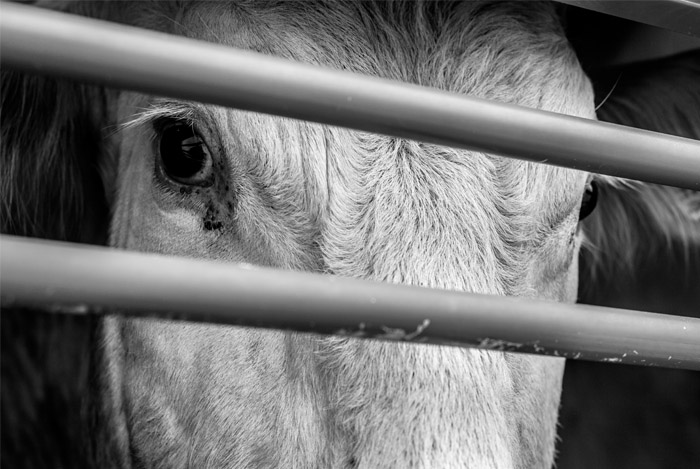
Since meats would be grown in sterile labs, cows wouldn’t have to brave cramped, overcrowded slaughterhouses where they become sick and need to take antibiotics.
The Centers for Disease Control and Prevention estimate that dangerous bacteria from meat are the most common source of food-related infections that lead to death.
So the US allows antibiotics in our meat just to fight off these pathogens. But then something even worse develops: antibiotic-resistant bacteria that’s harmful to us humans.
These super strains have the power to mutate and become worse versions of themselves that will require stronger drugs to combat. Yikes!
See Ya, Growth Hormones
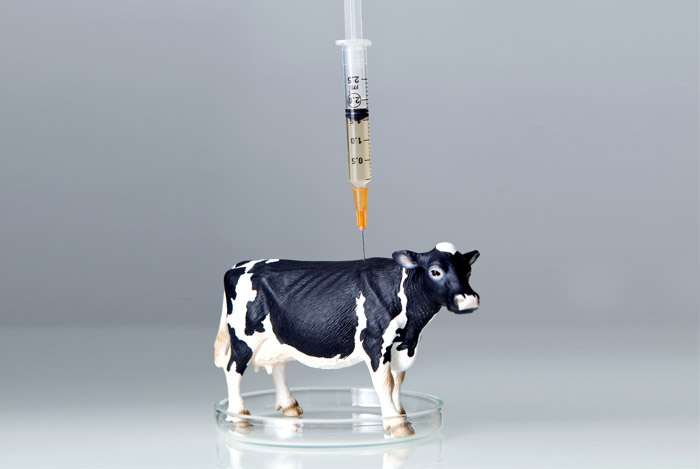
Growth hormones in meat are another silent threat.
The six most common growth hormones include:
- Estradiol
- Progesterone
- Testosterone
- Zeranol
- Trenbolone
- Melengestrol acetate (MGA)
A European Commission report exposed these big six livestock growth hormones for their adverse “endocrine, developmental, immunological, neurobiological, immunotoxic, genotoxic, and carcinogenic effects.”
Yeah, that pretty much covers every basic function your body needs to perform.
Estradiol is a known carcinogen, which means even just small traces of residue have the potential to initiate and proliferate cancerous tumors in your body. It’s been banned in livestock in Europe, but it’s still allowed in the US.
While the first three hormones are naturally-occurring, the last three are completely synthetic. They can cause serious hormonal disturbances.
On the contrary, lab-grown meat would not require any hormones to grow.
Fewer Carcinogens

The International Agency for Research on Cancer, part of the World Health Organization (WHO), announced that red meat is “probably carcinogenic”, but processed meats as definitely carcinogenic.
I wrote about these findings in my post, Does Red Meat Really Give You Cancer?, so you may already be familiar with this issue.
While there are several reasons for this “probably carcinogenic” classification, one theory is that heme iron—the type of iron found in red meat—has been correlated with cancer.
Heme iron is easily absorbed by our bodies, but it has been shown to damage DNA and even form N-nitroso compounds, which are very strong carcinogens that may lead to colorectal cancer.
While scientists have yet to test how much iron is in their lab-grown meat, if there’s any iron in it to begin with, they know for sure that they can produce safer meat made without it.
Although meat with less heme iron may not be as red and may be more of a yellow, scientists have already figured out that tinting the meat with red beet juice and saffron restores its color back to “normal” looking.
What About HAAs and PAHs, huh?

Do you know what the Maillard reaction is?
It’s a “chemical reaction between an amino acid and a reducing sugar, usually requiring the addition of heat.”
Basically, it’s what’s responsible for browning your chicken or toasting your whole grain bread for avocado toast.
This is what gives meat is delicious flavor when it’s grilled or roasted.
However, heterocyclic aromatic amines (HAA) and polycyclic aromatic hydrocarbons (PAHs), products of the Maillard reaction occurring at high heat such as grilling, may cause DNA damage and increase your risks of cancer.
Could scientists prevent these free radicals from forming at high temperatures?
Post admits that he doesn’t know how to change HAAs and PAHs, nor does he think he wants to do that. Some argue that lab-grown meat won’t be as tasty as regular meat without this flavor reaction.
Replacing Saturated Fat with Omega-3s
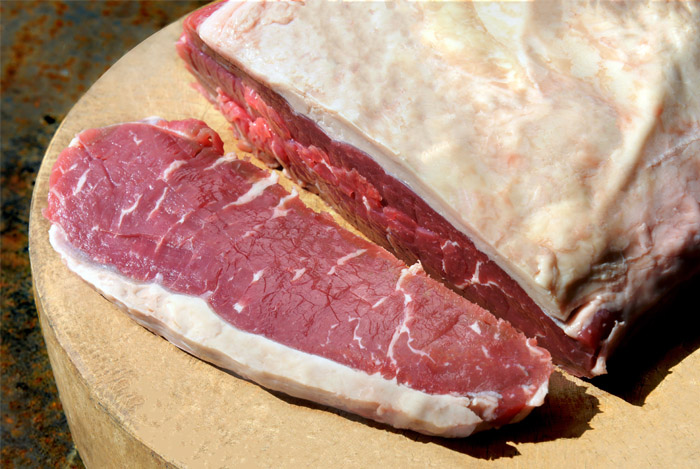
The American Heart Association discourages people from eating saturated fats since they raise LDL, or “bad”, cholesterol, and put them at risk of heart disease and strokes.
And beef is full of saturated fat.
But what if scientists could replace that “bad” fat with healthy fat like omega-3 fatty acids?
“Stem cells are, in principle, capable of making omega-3 fatty acids. If we can tap into that machinery of the cell, then we could make healthier hamburgers,” says Post.
However, speculators argue that removing too much of the fat will be asking for a dry, tasteless meat cake on your plate. Others say adding omega-3s may make the beef taste more like fish.
We’ll have to stay tuned for this one.
But We May Still Have Nitrates and Nitrites
Processed meats are carcinogenic in part because they contain the preservatives nitrates and nitrites. These are what make hot dogs stay the same color decades after you buy them.
Since lab-grown meat is sterile, it would at least need a whole lot less nitrate to stay stable enough for selling in the meat section at your supermarket.
Will Lab Grown Meat Save the Planet?

According to the Organization for Economic Cooperation and Development, prices for beef have been at a record high since demand has been steadily rising.
Meat consumption is expected to increase in North America and Europe by a little under 10%. But Asia is expected to see a near 60% increase!
Most people don’t know that raising meat is incredibly resource-zapping.
An article in Time reported that: “Livestock production may have a bigger impact on the planet than anything else.”
So how does lab-grown meat aim to solve this problem?
Fewer Greenhouse Gases & More Water
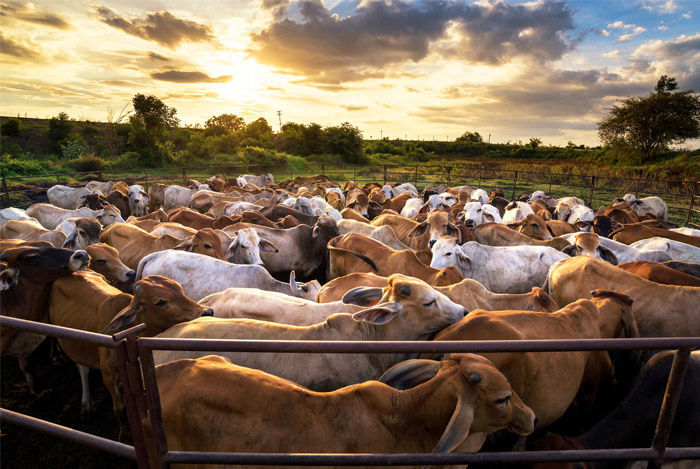
Hanna Tuomisto of the European Commission Joint Research Centre says that livestock production contributes 15% of global greenhouse gas emissions.
Greenhouse gases trap heat in the atmosphere and contribute to global warming.
However, if all meat was grown in labs, these emissions could be reduced by as much as 80%.
On top of that, did you know that it takes “1,799 gallons of water to produce one pound of beef”?
Livestock production accounts for 27% of the global water footprint; and growing meat in a lab would cut water usage for livestock by 90%.
“It’s really too soon to say what the environmental impacts of the first cultured meat products will be,” says Carolyn Mattick, an environmental engineer at Arizona State University.
But we’re keeping our fingers crossed. After all, have you ever stopped to consider how pollution in our environment affects our health?
Air pollution’s not only bad for your lungs, but it may also be to blame for those extra pounds you’ve been carrying around, too!
Cruelty-Free Carnivores
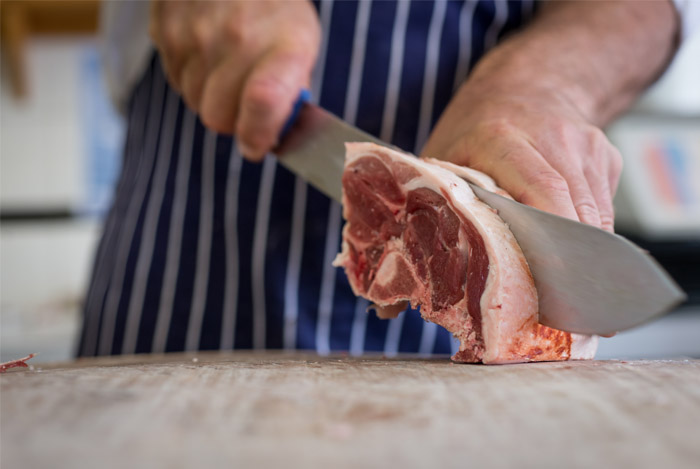
If you’re a vegetarian or vegan due to your beliefs about animal cruelty, lab-grown meat may be right up your alley.
Not only is is not made from suffering animals, but it will help remove other animals from the proverbial chopping block.
Since it only took three months to grow lab-meat—and the process will surely speed up once there’s enough demand for automation—supporters claim it’s even better than waiting around for a cow to mature enough to be slaughtered.
So instead of hundreds of thousands of cows needing to be killed to feed our growing appetites, just a few need to live to harvest stem cells from, which is a much less painful process for the cow than living in a slaughterhouse.
Experts estimate that we’ll see lab-grown meat at our local grocery stores within the next 10–20 years. That’s not that far away.
If it lives up to the environmental and health benefits I described today, I can’t see why lab-grown meat wouldn’t be a viable option for us that may even end world hunger.
Ok, that may be a stretch, but lab-grown meat is certainly not a pipe dream anymore.
What do you think about lab-grown meat? Does it give you the willies? Share your thoughts with me in the comments! I’d love to hear your reactions!
The post Is Lab Grown Meat the Key to a Healthier Future? appeared first on Nutrition Secrets.
http://www.nutritionsecrets.com/is-lab-grown-meat-the-key-to-a-healthier-future/
No comments:
Post a Comment